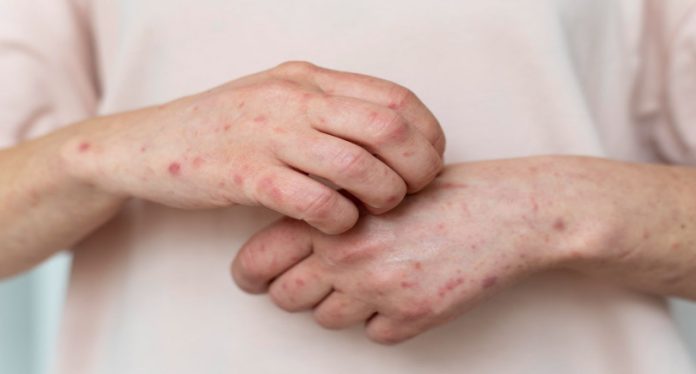Estimated reading time: 0 minutes
Chronic skin conditions such as psoriasis, eczema, acne, and Hidradenitis Suppurativa (HS) not only have profound physical and emotional effects on individuals but also impose significant economic burdens on patients and the healthcare system. Effective management of these conditions often requires comprehensive, ongoing treatment strategies that may include pharmaceuticals, specialist care, and lifestyle modifications. This article examines the financial aspects of managing chronic skin diseases, comparing the costs associated with traditional Western (allopathic) and traditional Indian (Ayurvedic) medical approaches.
Financial Burden of Chronic Skin Conditions in Allopathic Medicine
The allopathic approach to treating skin conditions typically involves various expensive interventions, including long-term medication use, specialized care, and potentially invasive procedures:
1. Pharmaceutical Treatments: Allopathic treatments often start with prescription medications, which can be costly. For conditions like psoriasis and HS, this may involve topical treatments, systemic medications, and biologics. Biologics are particularly notable for their high cost, often running into thousands of dollars each month.
2. Specialist Consultations and Care: Patients with chronic skin conditions usually require ongoing care from dermatologists and may also need to consult other specialists such as rheumatologists or endocrinologists, which can significantly increase medical costs.
3. Advanced Therapeutic Procedures: Treatments such as phototherapy, laser therapy, and surgical interventions for severe cases contribute heavily to healthcare expenses. Each session of laser therapy, for example, can cost several hundred to thousands of dollars, depending on the extent of the treatment.
4. Over-the-Counter Products: Besides prescription treatments, many patients invest in over-the-counter products like special moisturizers and shampoos designed to alleviate symptoms, which adds to the overall cost burden.
Indirect Costs and Broader Economic Impacts
Chronic skin conditions extend their economic impact beyond direct medical expenses:
1. Workplace Productivity: Regular flare-ups and the psychological stress associated with chronic skin conditions can lead to reduced productivity, absenteeism, and sometimes even job loss, affecting personal income and broader economic productivity.
2. Psychological Impact: The stress, anxiety, and depression that often accompany chronic skin diseases can lead to increased consumption of healthcare resources, including mental health services and medications.
Ayurvedic Treatment: A Cost-Effective Alternative?
Ayurveda provides a holistic approach to the management of skin conditions, focusing on diet, lifestyle modifications, and natural remedies, which may present a more cost-effective treatment option for some individuals.
1. Natural Remedies: Ayurveda commonly utilizes a variety of herbal treatments which are generally less expensive than conventional pharmaceuticals. Common herbs used include neem, turmeric, and aloe vera, which are accessible at relatively low costs and can be applied in various forms.
2. Dietary and Lifestyle Interventions: Emphasizing dietary adjustments and lifestyle practices, Ayurveda encourages routines that enhance overall health and may reduce the need for expensive medical treatments. Practices such as yoga and meditation can also help manage stress and mitigate its impact on the skin.
3. Reduced Frequency of Specialist Visits: Ayurvedic treatment may not require as frequent specialist consultations as allopathic approaches, potentially lowering overall healthcare costs.
Comparative Analysis of Costs
While both allopathic and Ayurvedic approaches provide effective solutions for managing chronic skin conditions, they differ significantly in cost structure:
– Allopathic treatments are often associated with high upfront and ongoing expenses due to the need for prescription drugs, high-tech treatments, and specialist care.
– Ayurvedic treatments may offer a more financially sustainable alternative in the long term, particularly for patients seeking natural remedies and those focusing on preventive care through diet and lifestyle changes.
Conclusion
The management of chronic skin conditions involves significant costs that can be burdensome for individuals and the healthcare system. While allopathic medicine offers advanced and targeted treatments, it often comes at a high financial cost. On the other hand, Ayurveda may provide a less expensive yet effective approach, focusing on natural remedies and holistic care. The choice between these treatments should consider effectiveness, cost, accessibility, and personal health philosophy, ideally under the guidance of knowledgeable healthcare professionals from both medical traditions. This balanced approach can help achieve optimal outcomes in the management of chronic skin conditions.
Related-
Know More About Ayurveda Treatments for Dermatology.
GET IN TOUCH


Recent comments